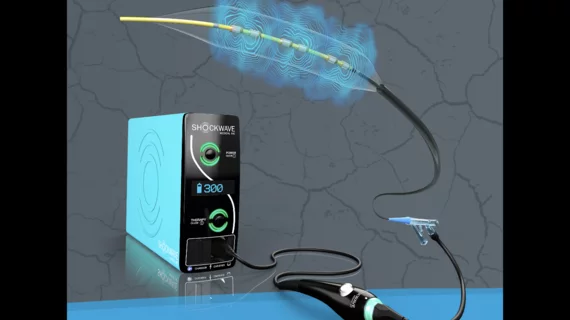Shockwave Medical launches new IVL catheter for challenging lesions in US
Shockwave Medical, the Santa Clara, California-based healthcare technology company known for developing intravascular lithotripsy (IVL) technology, has launched a new IVL catheter in the United States.
The Shockwave L6 Peripheral IVL Catheter was designed to treat calcified lesions in large peripheral blood vessels such as the iliac and common femoral arteries. Lesions in these arteries are known for being especially difficult to modify; they’ve also been associated with an increased risk of complications.
The Shockwave L6 catheter is available in four sizes—8.0 mm, 9.0 mm, 10.0 mm and 12.0 mm—and has been cleared by the U.S. Food and Drug Administration.
“Shockwave L6 is another example of our team’s commitment to developing technologies to address specific market needs while still maintaining the safety, effectiveness and ease of use of our core IVL technology,” Doug Godshall, Shockwave Medical CEO, said in a prepared statement. “We are pleased with the success of our limited release and the great feedback we have received from our customers. We now look forward to offering Shockwave L6 as an additional IVL option for the most complex and high-risk large vessel cases.”
“The characteristics of the new catheter allow physicians to optimize IVL therapy in large peripheral vessels, which represent over 20% of peripheral interventions performed in the U.S. each year,” added Frank Arko, MD, chief of vascular and endovascular surgery at Carolinas Medical Center. “The Shockwave L6 catheter may also be beneficial when IVL is utilized to facilitate transfemoral access for large bore procedures like transcatheter aortic valve replacement, thoracic endovascular aortic repair and endovascular aneurysm repair to minimize the risks of rupture and dissection.”
Read the full Shockwave Medical statement here.

